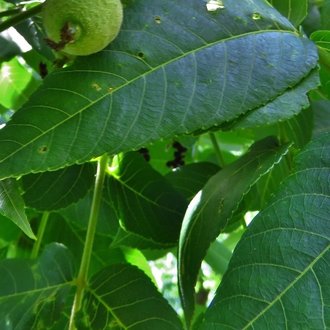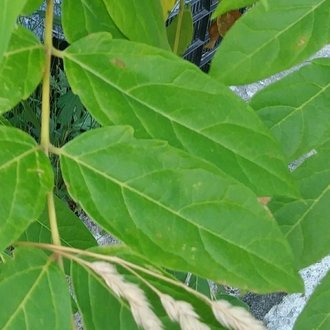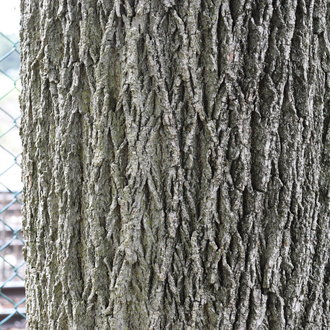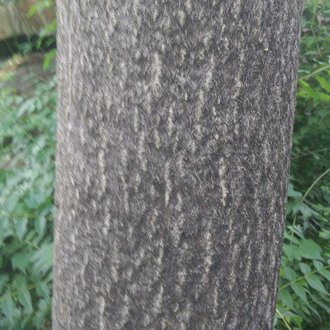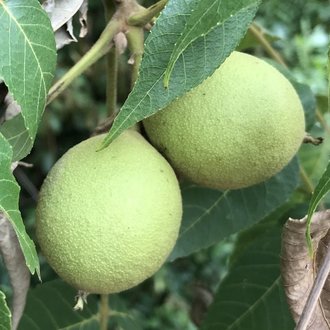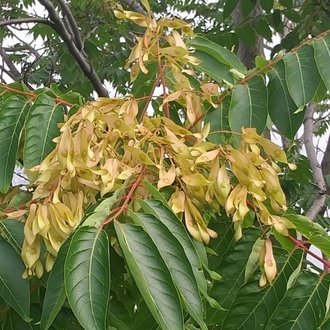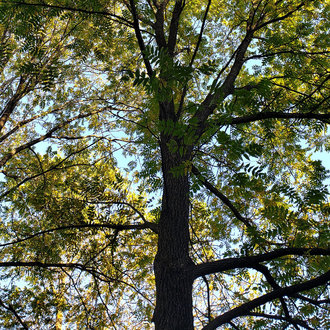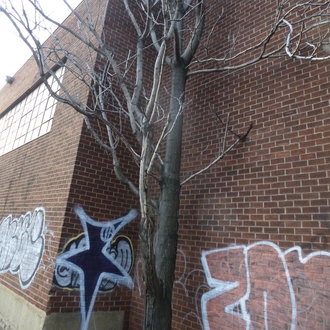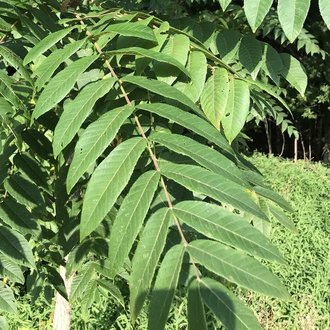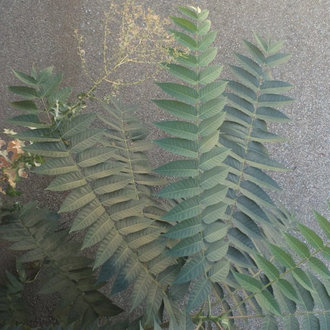Eastern Black Walnut vs Tree of Heaven
These trees are sometimes confused due to a similar shape to their compound leaves, and propensity to grow in sunny, disturbed habitats around human habitation, but they are easily distinguished if you know what to look for.
Eastern Black Walnut (Juglans nigra) | Tree of Heaven (Ailanthus altissima) |
A widespread and common tree native to eastern North America, valued for its nuts as well as its wood. | A fast-growing tree, native to east Asia, and widely introduced across North America. Common in anthropogenic habitats in much of its introduced range, less common in natural areas. |
Leaflets have fine, regularly-spaced serrations around their entire margins. Serrations are sometimes so fine that you need to look closely to see them. Photo © Annika Lindqvist, CC BY 4.0. | Leaflets have one to a few coarse teeth at the base, but the rest of the leaves have smooth margins. Photo © Ira Gershenhorn, Public Domain. |
Bark of mature trees rugged and coarse, with deep vertical ridges and furrows. Photo © Alex Zorach, CC BY-SA 4.0. | Bark of mature trees much smoother and thinner. Photo © Ira Gershenhorn, Public Domain. |
Large, almost spherical nuts contained in rough, green hulls. Painful if nuts fall from the tree onto your head. Photo © Madison Gover, CC BY 4.0. | Clusters of small seeds enclosed in thin wings to aid in wind-dispersal. Not painful if seeds fall from the tree onto your head. Photo © Ira Gershenhorn, Public Domain. |
Branches often extend more horizontally from trunk. Even small branches often make fairly wide angles. Photo © aarongunnar, CC BY 4.0. | Most branches angle strongly upward. Branching angles are often very small. Photo © Ira Gershenhorn, Public Domain. |
Leaves usually have 15-19 leaflets, rarely as few as 9 or as many as 23. Photo © Terri, Public Domain. | Leaves usually have 11-41 leaflets. Relatively common for leaves to have 25 or more leaflets. Photo © Jesse Rorabaugh, CC BY 4.0. |
Foliage mildly aromatic when crushed, an aroma that can be described as citrusy, spicy, and pleasant. Nut hulls strongly aromatic. | Foliage has a strong aroma when crushed, often described as nutty but unpleasant. |
References & External Resources
These short lists show only links helpful for ID. For a complete list of references and resources also covering other aspects of ecology, visit the links section of the full article on each plant, which is the first entry here.



